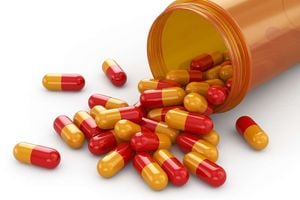Overuse of antibiotics in animals a major new threat to humans

The current unselective use of antimicrobials in animal production systems raises safety concerns for animals, humans and the environment.
What you need to know:
- Antimicrobials are widely used in animals to treat infections, prevent diseases and promote growth.
- However, using antibiotics in animals may raise the risk of transmitting drug-resistant bacteria to humans either by direct infection or by transferring “resistance genes from agriculture into human pathogens.
Misuse and overuse of antimicrobials in animals is contributing to the rising threat of drug resistance in humans, says a new report.
The report released last week by the Food and Agriculture Organization (FAO) titled “Tackling Microbial Resistance in Food and Agriculture’ indicated that famers are increasingly abusing antibiotics.
The report indicates that an estimated 70 per cent or more of the antimicrobials sold worldwide are used in food-producing animals, hence the crucial need to address antimicrobial resistance (AMR).
Antimicrobials are widely used in animals to treat infections, prevent diseases and promote growth. However, using antibiotics in animals may raise the risk of transmitting drug-resistant bacteria to humans either by direct infection or by transferring “resistance genes from agriculture into human pathogens.
In Kenya, slaughterhouses act as disease hotspots because of frequent interactions between humans and animals. According to the African Center for Disease Control , slaughterhouse workers are highly exposed to several zoonotic pathogens.
Some of the challenges facing the food and agriculture sectors’ response to antimicrobial resistance are scarce antimicrobial use and AMR data and lack of multi-sectorial coordination on information technology at regional and global levels to facilitate data collection.
Maria Helena Semedo, deputy director-general at FAO, said the world continues to face growing challenges that threaten global food security.
“Antimicrobials play a critical role in treating diseases in both aquatic and terrestrial food-producing animals as well as in crops. They contribute to productive and sustainable agrifood systems, supporting the countless livelihoods that depend on them around the world. When overused or misused, however, antimicrobials can contribute to a rise in antimicrobial resistance,” she said. She noted that the silent AMR pandemic is one of the global challenges the world is facing that can jeopardise human and animal health and welfare gains, the environment, food and nutrition security and safety, economic growth and development.
Antimicrobial resistance impacts everyone everywhere, and it was responsible for at least 1.3 million deaths and five million associated deaths globally in 2019, according to the data from FAO.
“It deserves to be better recognised that the all-age death rate attributable to resistance is highest in the developing countries of the global south. Antimicrobial resistance is therefore not a “first world problem”— it is one that the entire membership of FAO must face together.
“Much needs to be done to generate comprehensive and robust evidence, develop and implement interventions that will reduce the need of antimicrobials, and ensure that strong and effective governance and resources are mobilised to enable sustainable action.”
According to the World Health Organization, antimicrobial resistance occurs when bacteria, viruses, fungi and parasites no longer respond to antimicrobial medicines and as a result the infections become difficult to treat; further increasing the risk of severe illness. This results in death or a new wave of the disease spreading.
Drug resistance bacterial infection led to 1.27 million human deaths in 2019 and if gone unchecked, the spread of drug resistance pathogens and the rise of AMR may result in more than 3.4 trillion losses in global annual gross domestic product by the end of this decade. This is according to a report by the Organization for Economic Co-operation and Development.
The report also emphasised the need for countries to strengthen the usage of AMR data in the food and agricultural sectors and further reduce antimicrobial usage in the sectors by urging member countries to apply good production and management practices.
“More broadly, the future response to AMR in the food and agricultural sectors requires more and better evidence, more informed and more widely implemented interventions to reduce the need for antimicrobials, an increase in resources, greater capacity and stronger governance to ensure tackling AMR in food and agriculture,” the report indicated.
Dr Jecinta Mwirigi, a livestock production specialist in an opinion piece while focusing on poultry indicated that the current unselective use of antimicrobials in animal production systems raises safety concerns for animals, humans and the environment.
For instance, she cited the treatment of all birds when only one of them in a flock is ill and the use of the drugs to prevent diseases.
Misuse and overuse of antimicrobials in chicken production is common in Kenya. In a study carried out in Kiambu County, whose findings were published in the Pubmed Journal in January 2021, researchers from FAO, Kenya’s Ministry of Agriculture and College of Sciences in Makerere, Uganda, investigated the challenges of small-scale layer farms. They found out that 62 per cent of farmers were constantly using antimicrobials, some of which were referred to as magic drugs. These included tetracycline and tylosin. Furthermore, lack of clean water, proper sanitation and inadequate disease control promote the spread of drug-resistant disease-causing pathogens, which are referred to as superbugs.




